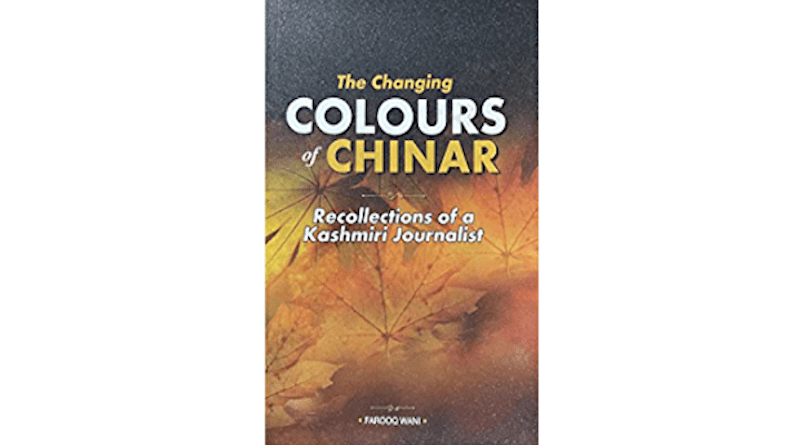Kashmir: A Lost Paradise On The Mend – Book Review
By Ashok Dixit
Writing on or about Kashmir is never an easy task owing to the region’s many complexities, including aspects of it that with the passage of time have been altered or suppressed to suit a particular political dispensation, or to showcase socio-economic realities keeping the vote-bank in mind.
Author, veteran journalist and Editor-in-Chief of the Brighter Kashmir newspaper Farooq Wani has just come out with two books — The Changing Colours of Chinar: Recollections of a Kashmiri Journalist and Sheikh-ul-Alam (RA): Kashmir’s Mystic Sufi Saint.
Neither of these two books seeks to impose an opinion, but rather chooses to inform the reader. Both volumes, as the title of the first indicates, are in fact, reflections and recollections of happenings in the Kashmir Valley to which author Wani was a personal witness.
The 77-chapter Changing Colours of Chinar is a timely publication, coming at a time when the UT of J&K is perceptively undergoing large-scale change and development, ticking off many of the socio-economic and infrastructure-linked mark-ups/indices, and in yet, contrastingly, as a region, still faces challenges of geopolitics, militancy, ingrained and hard to alter domestic dogma, base level administrative lethargy and social evils like drug addiction, environmental degradation, et al. Misreporting on facts and spreading disinformation to suit the political palate is another challenge.
Wielding his pen, or rather his laptop keys with felicity, Farooq Wani takes us into the past on a journey of nearly two decades of covering a wide range of issues that have left an indelible impact on Kashmiri society, be it politics, the impact of the abrogation of Articles 370 and 35-A, diplomacy, international relations, entertainment and culture, the instances when the army, paramilitaries and the J&K police have stepped in to ensure an atmosphere of peace, stability, improved community and civic engagement, the clear and ever present danger of a two-front conflict breaking out, with Pakistan on the West and China on the north, the drugs menace and the continuing allure of militancy for a large section of Kashmiri youth, the huge challenge for creating jobs to wean youth away from activities that destabilise society and families, an appeal to restore Kashmir again as the go to place for Bollywood, as it once was between the 1950s and 1980s and efforts to make Kashmir a region of aspiring achievers. As a reader looking into Kashmir from the outside, the book was enjoyably informative without being opinionated, and also convinces us to introspect on what kind of J&K we want for ourselves. The section on personalities with whom Wani met and engaged with was particularly of great interest.
Changing Colours of Chinar presents a fresh perspective in the mode of an observer. Definitely, it makes for a one time read.
The second book on Sheikh-ul-Alam (RA), is more of a tribute to a religious inclined human being who spent a major part of his life promoting harmony between disparate communities of Kashmir and slightly beyond, and has acquired the stature of a legendary spiritual guide for generations of Kashmiris, including the author. It is biographical in parts, but the focus remains on the many musings and scholarly positions of the Sheikh, each of which emerged from his experiences while wandering across the length and breadth of Kashmir.
The book lucidly reflects on the importance of the spirit of Kashmiriyat as it existed then and which we speak of today often when opportunity provides, sometimes without understanding its deeper meaning. Be that as it may, it is unthinkable to contemplate Kashmiriyat without referencing spiritual legends like Sheikh-ul-Alam and Lal Ded (a.k.a. Lalleshwari).


Thanks for a balanced review. As mentioned in the review, everything about Kashmir is highly opinionated, complex, and has a story of its own. Waiting to see a Kashmir of the Kashmir ki Kali era.